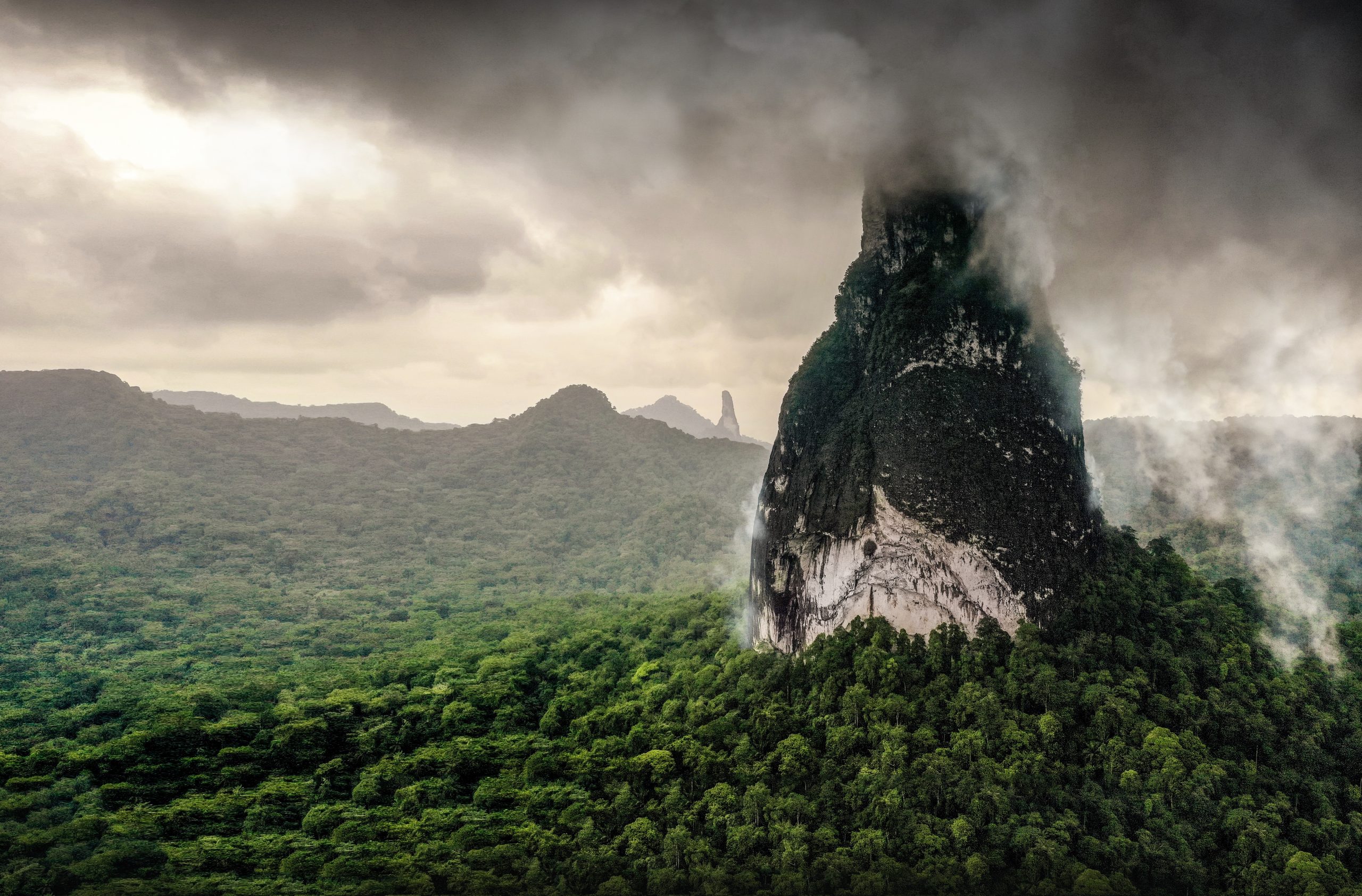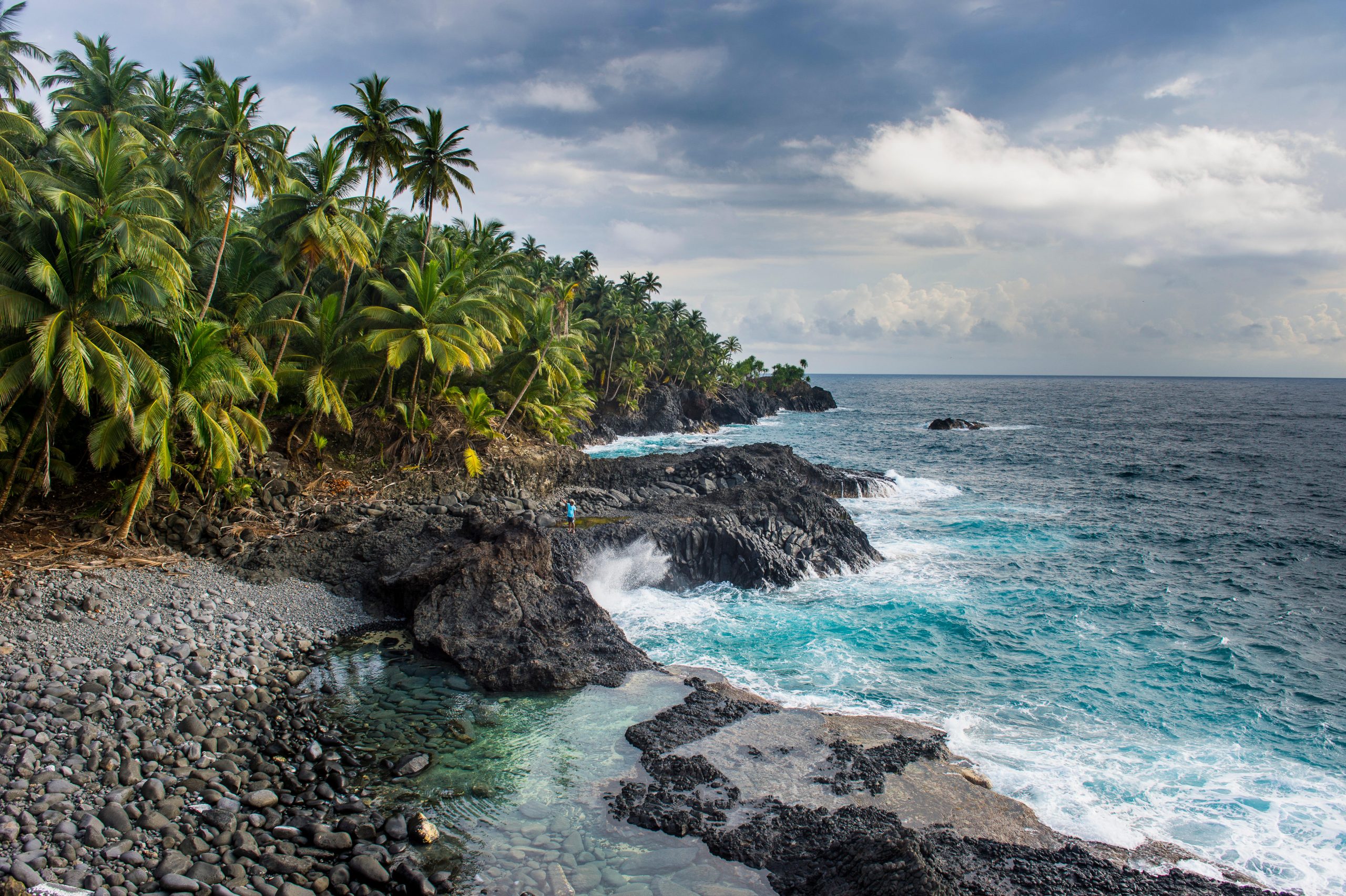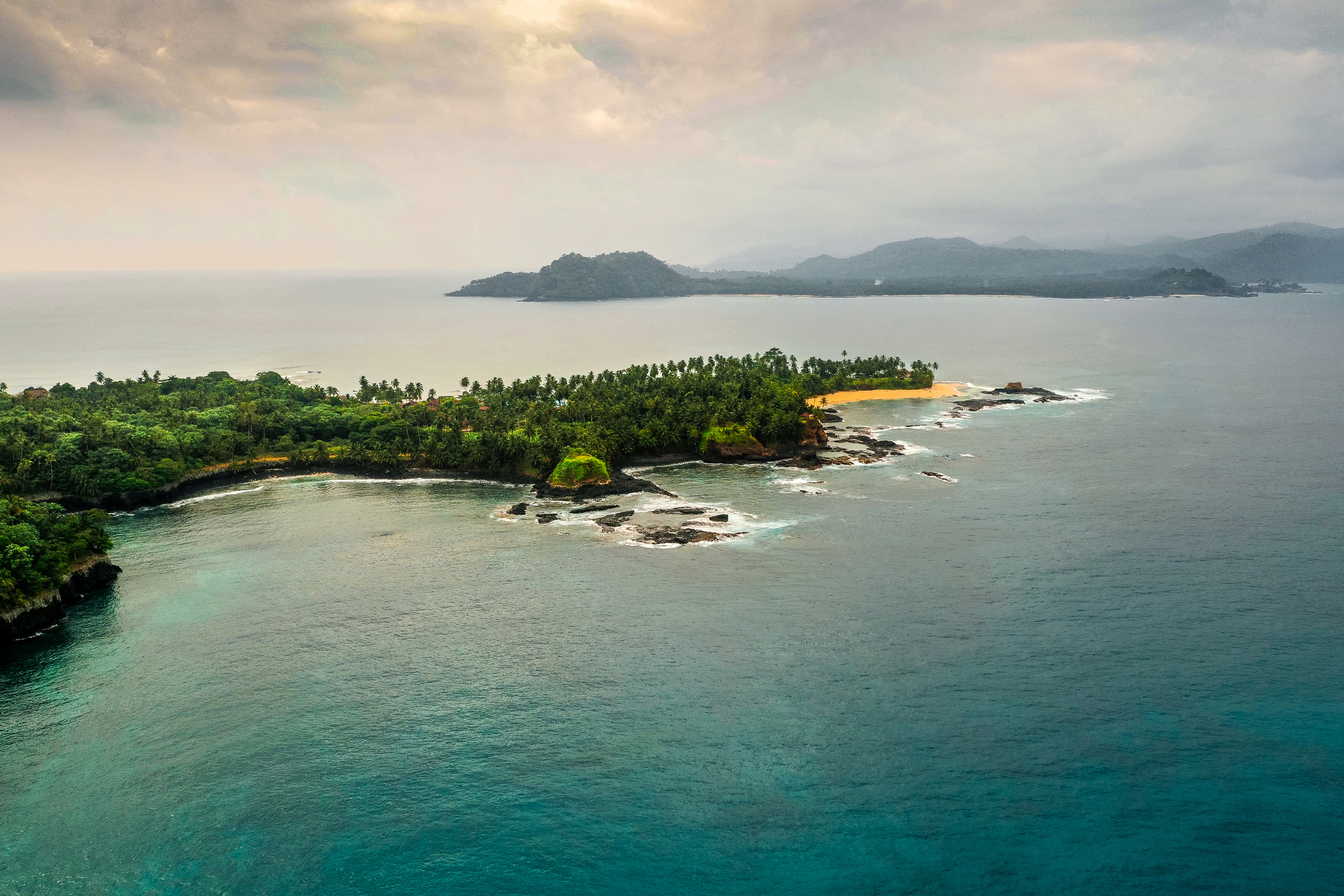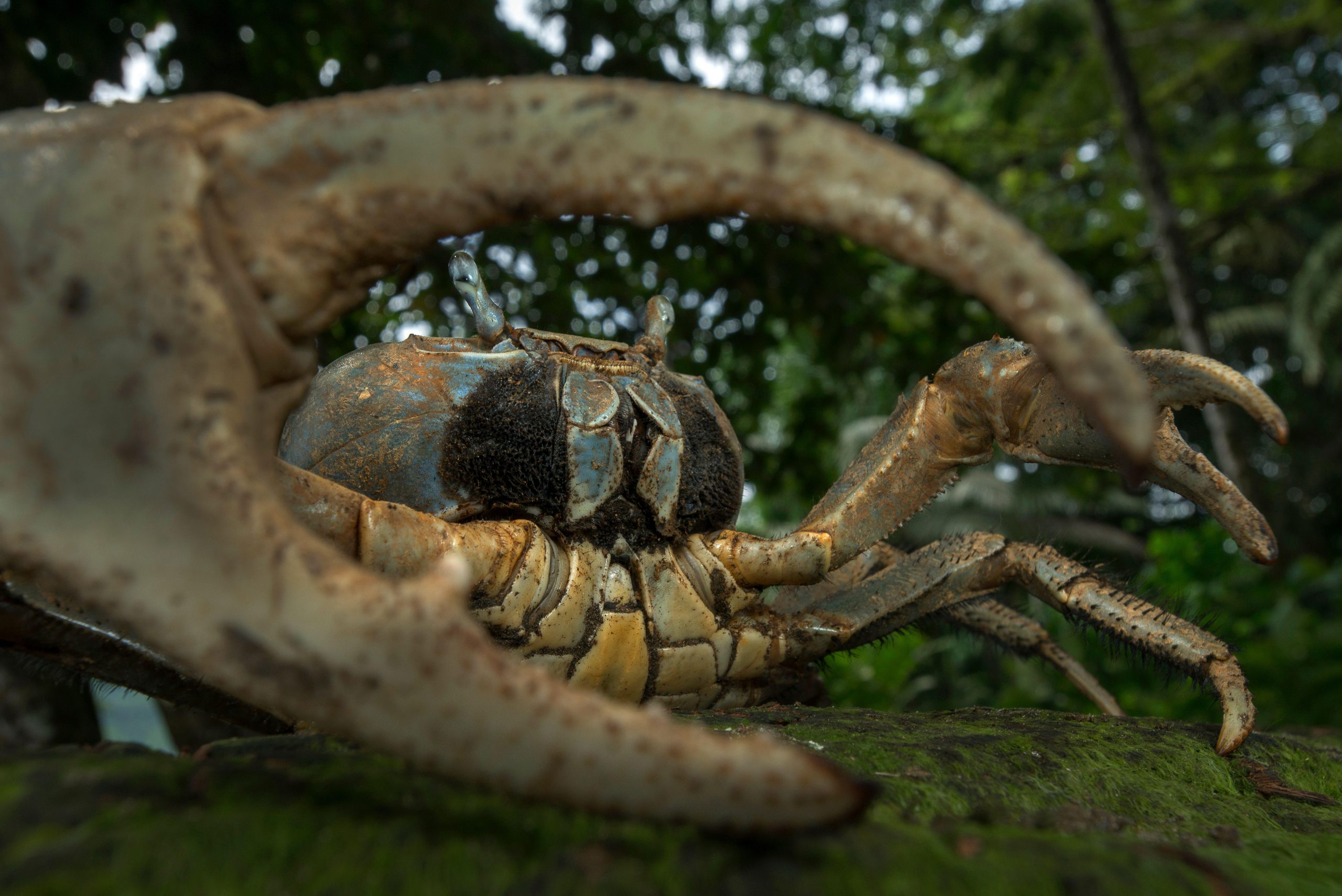São Tomé and Príncipe: The forgotten African islands with more species than the Galapagos
Sarah Freeman journeys to São Tomé and Príncipe, a hidden paradise off Africa’s western coastline.

As I bury my toes deeper into sugary-soft sand, a deafening screech followed by a flash of red disappearing around the jungle headland forces my gaze skywards. It’s a Príncipe grey parrot—a bird that’s failed to thrive nearly anywhere else but here, on an island of which few have heard.
Roughly the size of the Isle of Wight and home to only 7,000 people, Príncipe is the wilder half of Portuguese-speaking São Tomé and Príncipe (STP): Africa’s second-smallest country. The equator-skimming, twin-island state is cast 200-miles from the continent’s west coast in the Gulf of Guinea.
Separated from its sibling by 100 miles of roiling Atlantic Ocean, Príncipe is typically reached by twin-propeller plane. The final five minutes for the 40-minute journey are the most spectacular, a Jurassic Park-style panorama every shade of green, the entirety of which is designated a UNESCO biosphere reserve.

This sheer remoteness of this volcanic twin-island is its USP. Species evolved in splendid isolation over the course of 30 million years, until Portuguese navigators washed up on its shores in 1470, plunging the island into 500 years of colonial rule. Thankfully, the STP still bristles with biodiversity, home to more endemic species per square mile than the Galapagos Islands (which are eight times larger). Take, for example, STP’s Obô National Park, home to 700 plant species, including 100 larger-than-life orchids. The only thing missing? Mammals. They’re thin on the ground, save for the São Tomé shrew, but the skies are routinely studded with 27 species of bird and 25 of butterfly. The Galapagos, where hotel development has exploded over the past decade and 250,000 tourists visit every year (versus STP’s modest 35,000), serves as a cautionary tale.
In 2010, South African technology entrepreneur Mark Shuttleworth founded HBD (an acronym for Here Be Dragons), the aim of which is to protect the STP’s unique flora and fauna. Working in partnership with the Príncipe government and various NGOs, HBD has been central to STP’s social and economic development, operating a quartet of properties, including Roça Sundy, and employing about 450 local people.

Roças are the local name for plantation estates, built by slaves trafficked from the mainland, totalling 150 at the turn of the 20th century. A lot of them grew cacao, in such quantities that the two islands were quickly nicknamed The Chocolate Islands. After the country gained independence in 1975, many of the roças were reduced to crumbling ruins.
Scores of Príncipe’s jungle trails follow abandoned railway tracks, built to cart cacao down to the coast and onto waiting ships. I follow local carpenter-turned-guide Vander Santo down one such trail: ‘The forest is my greatest teacher,’ he says as he prizes open a red cardamom-scented seed called osami. Resting in the buttress roots of an oak tree, our conversation is soon drowned out by a symphony of bird calls. We catch sight of the vivid yellow underbelly of a Príncipe weaver through gaps in the forest canopy. Gigantism and dwarfism is rife among STP’s bird population, the former a biological phenomenon known as island gigantism, once rife across other island states until humans moved in, driving multiple species to the brink of extinction.
Sign up for the Country Life Newsletter
Exquisite houses, the beauty of Nature, and how to get the most from your life, straight to your inbox.

Biologist João Carlos Alves, member of Fundação Príncipe—one of the NGOs partnered with HBD—reels off a list of some of the island’s more eccentric inhabitants: a native peach tree that grows star-shaped fruit; a massive, spiral-shelled snail; five of a total six mollusc species that are relatively new to science and slither peacefully across the forest floor.
I forgo a trek to the 100ft-high Oquê Pipi waterfall for a lunch of fried fish cakes at Roça Sundy’s sister property, Sundy Praia, under the beady, watchful eye of a Príncipe kingfisher, but later embark on a trip to the Bay of Needles, only accessible by boat. Formed in similar style to St Lucia’s sculptured Pitons, the Bay’s phonolitic spires rise sharply out of swirling jungle mist—a cinematic snorkelling backdrop. Save for a few fishermen in dugout canoes, our party of six has the luminescent parrotfish and barracuda-rich waters, all to ourselves.
There are 15 suites spread across two historic houses: twitchers should request one of the ground-floor rooms with private terraces that almost skim the forest canopy
The hotel’s 14 luxury tents, complete with four-poster beds and granite-hewn bathtubs, are camouflaged by a tangle of banana and almond trees. Good for foodies—the ocean-to-plate fare is served in a cathedral-scale bamboo dining room
This 30-room boutique hotel is where guests normally stop for the night, ahead of their onward flight. It’s a coconut’s throw from the Havana-esque, colonial-style capital
How to get there
Rainbow Tours offer a 12-day trip from £3,795 per person, including three nights at Omali Lodge on a bed-and-breakfast basis, four nights at Sundy Praia on a half-board basis and three nights at Roça Sundy on a half-board basis, including flights and transfers (020–766 1250). One guided experience a day is included at Sundy Praia and Roça Sundy when booked directly through HBD. TAP Air flies between London and São Tomé via Lisbon; inter-island flights can be booked through STP Airways
Get more from your holiday with a stopover in Lisbon. Click here for our review of one of the city's best hotels — Palácio Príncipe Real — and some suggestions for what to do while you're there
-
 The King's favourite tea, conclave and spring flowers: Country Life Quiz of the Day, April 22, 2025
The King's favourite tea, conclave and spring flowers: Country Life Quiz of the Day, April 22, 2025Tuesday's Quiz of the Day blows smoke, tells the time and more.
By Toby Keel
-
 London is the place for me* (*the discerning property buyer)
London is the place for me* (*the discerning property buyer)With more buyers looking at London than anywhere else, is the 'race for space' finally over?
By Annabel Dixon